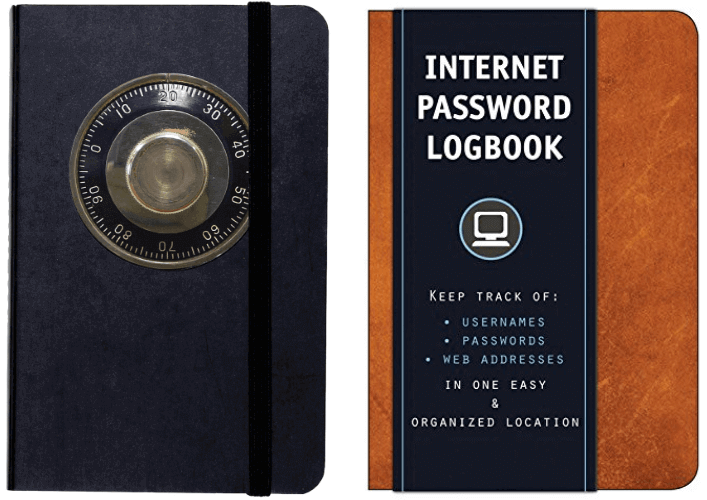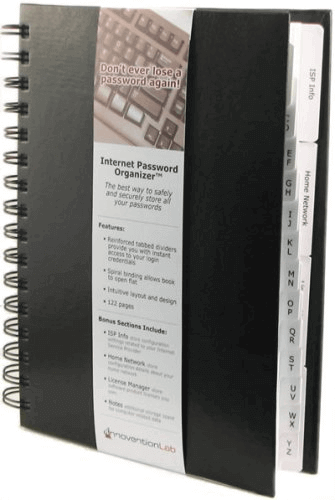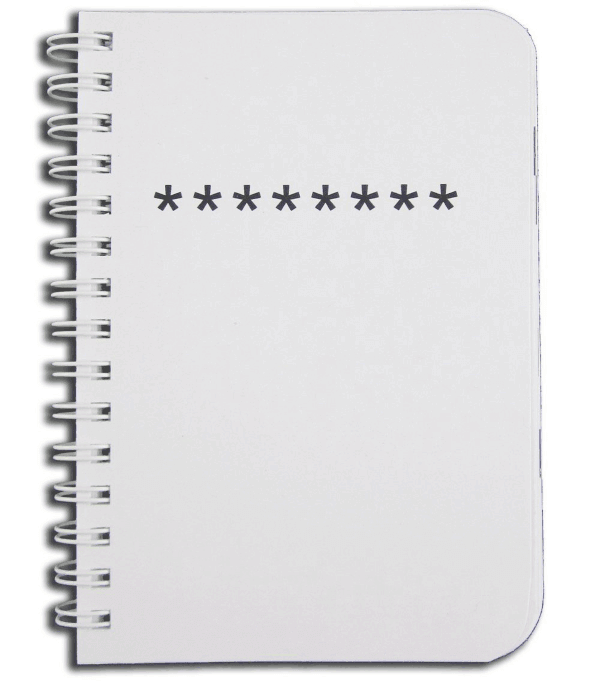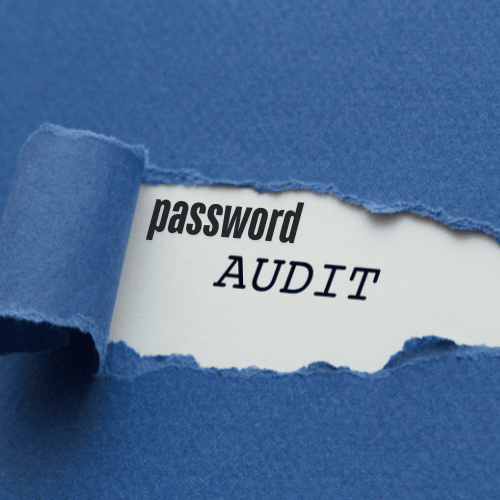The usefulness of password organizer books
A password organizer book is a notebook that has a similar appearance to those notebooks in which contact information are written down. The only difference is that in a password notebook the pages contain entered login information to various sites that you might have accounts on.
You may be wondering: “Why on earth would someone buy a simple notebook when it is not convenient at all?” Admittedly, scribbling down credentials into a password keeper book and looking up the necessary information every time any login details are needed does indeed sound obsolete, but keeping such a logbook by your side has some unexpected advantages.
Probably the biggest advantage is that a physical notebook can’t be accessed by hackers, since it doesn’t connect to the internet. Not to mention that having login credentials in a stylish notebook is way better than writing down passwords onto sticky notes that are keen at being lost. And one more thing: passwords and credentials jotted down in a password organizer book can only be destroyed if you delete the information in question or if the book is physically damaged.

Unfortunately, these journals do have major downsides too, with the most notable being the lack of security. In simpler words, if the book is lost, gets stolen or a credential goes missing due to it being torn or smudged over the years, then there is absolutely nothing you can do about it. The moment you have to reset a previously written down password you need to somehow erase it and overwrite it by the new one, often resulting in an unreadable mess. Even if you’ve been using a pencil on thick quality paper you may still end up making it one big smudge.
Additionally, the notebook must be kept in a place where nobody can access it, otherwise unwanted parties – especially those with malicious intent – may be able to find all your most sensitive data with relative ease.
Simply put: a password manager book is far from being as safe as a password manager program, but it is still better (and more stylish) than sticky notes.
The best password organizer books on Amazon
Our main goal is to review the best password manager software on the market, but if you might prefer this traditional approach of keeping credentials organized then we have collected some of the best offers from Amazon’s online store:











User feedback